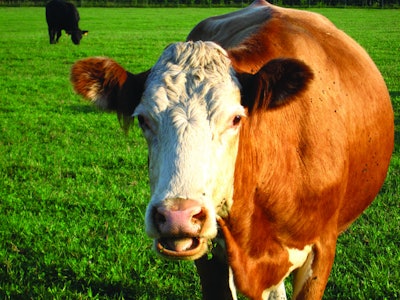
As pet food production grows in the United States, demand from dog, cat and other pet food industries for animal proteins may surpass supply from the United States’ agricultural system. Researchers from Kansas State University will present a paper on this, "Animal Protein-Based Ingredients in Pet Food: Analysis of Supply Chain and Market Drivers," at the 2022 Agricultural and Applied Economics Association Annual Meeting in Anaheim, California from July 31 to August 2. Animal protein production bottlenecks were only one of the supply chain issues facing the pet food industry now and in the near future, according to the researchers in their examination of the interplay among human and pet food ingredient demands.
“A comparison of the growth rates of U.S. pet food production and U.S. animal slaughter for human consumption can be used to determine if animal protein is growing fast enough to keep up with the growth in pet food,” the researchers, who included Petfood Industry Ingredient Issues columnist Greg Aldrich, PhD, professor and pet food program coordinator at Kansas State University, wrote. “…The units of pet food produced in the U.S. have been growing at a faster rate than animals slaughtered for human consumption... This is significant because if these growth rates continue there will be a point where there are no longer enough animal protein-based ingredients to meet the needs of pet food production.”
In their study, the researchers learned that, of 8.9 million tons of rendered protein meals produced annually in the U.S., pet food production accounted for 1.5 million tons (16.85%). Dog, cat and other pet food used 1.83 million tons of meat, poultry and organ byproducts directly from slaughtering. A 2011 study found that 31% of rendered ingredients produced in the US and Canada went into pet food. Pet food is the largest user of poultry by-product meal and non-ruminant mammalian meat by-product meal.
Pet food industry supply chain challenges
The pet food industry’s reliance on the same animal protein sources as people may result in competition and supply issues. Other pet food ingredients also face logistical difficulties.
“Supply chain challenges involving ingredients, labor, and transportation are key issues impacting the pet food industry,” the researchers wrote. “These issues will likely be exacerbated in 2022 by government mandates and tax incentives involving renewable diesel production. Speaking with industry stakeholders at Petfood Forum 2022 provided more details on the supply chain issues in the pet food industry. Some of these issues include a lack of labor to keep up with demand, the opportunity cost of raw materials taking ingredients out of pet food, and longer wait times to get ingredients from imports. Some rendering companies are having problems with upstream supply chain issues at the meat processing level.”
















